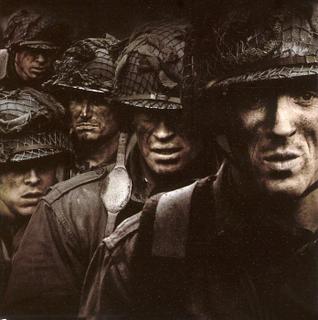Indossava il suo solito piumino nero lucido a salsicciotti ma aveva aggiunto al corredo un cappello tipo basco che le raccoglieva la gran massa dei capelli neri, lasciando sfuggire solo qualche ciocca, dandole un aspetto da etudiant francaise un po’ mignotta. Incredibilmente si era anche messa una gonnellina scozzese, piuttosto corta, a metà coscia, delle spesse pantacollant nere, un girocollo bianco e degli anfibi, tipo i Doctor Marteen’s che portavo io al liceo. Le sue gambette corte risultavano anche un po’ tozze. Questa ragazza decisamente non sapeva vestirsi. Decisi che avrei fatto qualcosa in proposito.
Percorrevamo la A4 ad una velocità un po’ sopra i limiti consentiti. La Volvo teneva sicura l’asfalto bagnato. Melissa era euforica e aveva già stampato le sue labbra tumide sulle mie e sulla mia guancia destra, lasciandomi una evidente traccia di rossetto scuro, tendente al marrone. Una nuova fragranza agrumata l’accompagnava. Mi sembrò di riconoscerla in CK-one.
- Meli...
- Ops.. e pensare che non mi trucco mai... l’ho fatto per te. Come mi trovi?
- Beh, sei molto carina...
- Non mi vesto mai così...
E meno male, pensai.
- La gonna intendo... non la metto mai... mi sta male?
- No, ti sta benissimo! Ti trovo molto sexi...
- Mmm, grazie, dove si va stasera?
- Mah, ho prenotato in un posticino carino, sul lago di E*****, poi se ti va facciamo un salto a L*****... c’e una specie di disco-pub abbastanza carino... cerchiamo di stare un po’ fuori porta, è meglio no?
- Certo. Che bello!
- Eh allora come ti va?
- Bene. Beh, con Santo meglio che con Carmen... è un po’ arpia...
- Non posso darti torto, ma qui lo dico e qui lo nego.
- Cero non mi diverto più come con te...
- Eh, beh... E per il resto?
- Bene. Luca non sospetta, mi sembra almeno...
- Meglio così, no?
- Si... Non so. Forse dovrei lasciarlo... non sono abituata a tenere il piede in due scarpe... no non sei uno scarpone, amore mio! Poi mi sembra di... non lo so, un po’ è anche eccitante questo pasticcio... però... un momento mi piaci tu e non esiste altro, poi rivedo lui e penso che è stato il mio primo vero fidanzato... la fatica che ho fatto per farmi notare, per interessarlo... e poi non voglio dare una soddisfazione a quegli stronzi snob dei suoi.
- Io non ho nessun diritto di essere geloso Meli... lo sai. Non ti chiedo niente. Mi piace stare con te, così. Prendiamo le cose come vengono, poi si vedrà, lascia perdere i programmi troppo a lungo termine... non funzionano mai bene.
- Si, hai ragione.
Le condizioni del traffico erano buone, nonostante la pioggerillina di Novembre che cadeva leggera. In meno di un ora raggiungemmo il Pampero, a R********. Riuscii a trovare un posto per l’auto poco distante dall’ingresso. Aprii l’ombrello e la portiera di Melissa. Le offrii il braccio.
- Madame...
- Oh merci!
Entrai per primo tenendo aperta la porta per Melissa. Fummo ricevuti da Celestino che ci salutò calorosamente, ci liberò dalle giacche, conducendoci al guardaroba e ci scortò ad una tavolo abbastanza appartato, vicino alla finestra che dava sul terrazzo. Il locale non era molto affollato, ma era ancora abbastanza presto. Melissa si guardava intorno deliziata.
- Cavolo Sandro... così mi vizi...
- Solo un po’...
Melissa rimosse il nastro di seta rosso che legava il suo tovagliolo di lino avorio, ruvido e gigante. Un attempato cameriere si accostò al tavolo, salutò e ci riempì un flutê di spumante Bellavista. Melissa fu subito attratta dal bel cesto in argento, appena messo in tavola, che conteneva una selezione di piccoli pani di diversi tipi, al sesamo, al papavero, alle patate, alle olive.
- Sandro, assaggia, sono ancora caldi...
- Piccola delicatezza della casa...
- Mmm, buonissimi.
Arrivarono anche i menù. Melissa mi chiese consiglio e la orientai sui piatti di pesce. Avevo desiderio di un bel vino bianco, pieno e fresco. Dopo un po’ di tira-molla, scegliemmo entrambi un antipasto a base di storione caldo con cipolle allo zenzero e salsa d’arancia ed un secondo piatto di gamberoni alla catalana per lei, mentre io mi orientai su pesce persico dorato al timo con agretto di capperi. Celestino tornò con la carta dei vini dalla quale pescai uno Chardonnay, che sapevo capace di tenere il passo con lo storione, col quale, invece, Celestino, sosteneva l’opzione di abbinare un bel Cerasuolo di Vittoria, sempre che volessi davvero un vino dei Planeta. Brevi dotte dissertazioni per addetti ai lavori, di fronte ad una Melissa attentissima.
- Ma sei una specie di somellier professionista!
- Beh, in gioventù ho frequentato un paio di corsi all’A.I.S.
- Non mi dispiacerebbe imparare qualcosa di più sul vino...
- Allora continua a frequentare me!
- Sandro, Sandro... che ne sarà di noi... di me...
- Meli, Meli, tu cerchi troppe risposte nel futuro... vivi di più il presente!
Assaggiai il vino. Poco dopo arrivarono gli storioni. Melissa era estasiata.
- Dai Meli proponi un brindisi...
- Oddio, io? Dai fanne uno tu...
- Mmm…, “a handful of skills is better than a bagful of gold”!
- Bello! Che cos’è?
- Irish toast.
- Cheers!
Il dolce vita bianco di Melissa lasciava intravedere i suoi capezzoli. Melissa aveva un seno piccolo, una seconda al massimo, con due capezzoli che sembravano davvero due lamponi maturi. Quella sera non portava il reggiseno. Avevo già deciso come si sarebbe conclusa questa serata. Il pene mi si inturgidì spingendo contro la stoffa dei chinos blue.
- E tu non fai un brindisi?
- Al mio tutor... ad un uomo estremamente affascinante... a te Sandro.
- Vuoi farmi arrossire?
- Baciami...
Mi alzai proteso oltre la distesa di bicchieri che ci divedevano. Nuovamente le sue labbra tumide sulle mie.
- Meli così mi ecciti...
- Meno male!
- Ma pensa un po’... che impudenza. E pensare che cominciavo a crederti un po’ suorina...
- Never judge the book by the cover… non me lo hai insegnato tu?
- Touchè.
- Beh, questa storia della suorina a volte ritorna...
- Scherzavo.
- No, non intedevo da parte tua...
- Da parte di chi allora?
- In generale... ho sempre avuto un po’ questo complesso, chiamalo così... un po’ sarà il mio aspetto, che non mi trucco, che non mi vesto sexi... che ho il fisico che vedi... certo, una giovane donna con il viso da bimba, che non è cresciuta oltre il metro e cinquantacinque...
- Mia mamma dice sempre che nelle botti piccole sta il vino più buono...
- Grazie. Però non è facile. Non sempre, cioè non con le persone poco intelligenti.
- Non sei obbligata ad averci a che fare.
- A volte si. Poi spero tu ti ricordi ancora come vanno le cose tra ragazzi, il gruppo, l’appartenenza, i modelli condivisi...
- Si. Convengo. Hai ragione.
- Insomma, non sono bella, Sandro.
- Ma dai!
- Dai un corno. Dai, non sono bella. Posso piacere, forse, se uno mi conosce, se fa uno sforzo. Non a tutti poi... non sono certo una che la gente si volta a guardare...
- Che c’entra... nemmeno io...
- Tu sei un uomo... è diverso, poi sei brillante, atletico. Ok non sarai Brad Pitt, ma cavolo, io sono lusingata di stare con te... cioè di accompagnarmi a te. Lo vedo quando entriamo nei posti... la gente ti osserva...
- Addirittura... sarà la pashmina azzurro pastello?
- Cretino, dai hai capito...
- Va beh, daccordo, grazie per il complimento.
- Comunque questa suorina nasconde anche delle storie di vita interessanti...
- Mmmm, mi stai stuzzicando la curiosità... qualche retroscena torbido? Qualche oscura perversione?
- Beh, una avventura a tinte fosche un po’ perversa l’ho vissuta davvero.
- Adesso mi racconti.
- Beh... forse non è il caso, a tavola...
- E no, scusa, lanci il sasso e ti nascondi?
- Mmm. Va bene. Basta che poi non mi giudichi male...
Celestino arrivò a liberarci dei piatti vuoti e a versarci altro vino nei calici ampi. Si informò che tutto stesse andando per il meglio e, rassicurato, si congedò.
- Beh Meli, non tenermi sulle spine... qual’è la storia?
- Una volta... un paio di anni fa... mi ero da poco aggregata al giro di amici di Luca... ma non stavamo ancora insieme. C’era questo ragazzo, Francesco che anche lui c’entrava poco con quel milieu... ma era uno che aveva sempre buoni argomenti per introdursi tra i figli di papà, solita roba bianca, pasticche e arsenale vario...
- ...
- No, non è una storia di droga... Sandro! Sono pulita come l’acqua di montagna... e spero non così banale...
- Lo so!
- E allora che facce fai?
- Io? Ma se sono una maschera!
- Va beh, questo... Chicco, mi pare lo chiamassimo, mi ha nasato subito... che non ero una del giro della M***** bene... e si è un po’ attaccato. No, non credo che gli interessassi in quel senso... mirava ad una certa Elisabetta... solo... mi vedeva un po’ più simile a lui, vicina ai suoi di problemi più che a quelli dei fighetti... va beh, per farla breve: un giorno mi fa: “Melissa, ti va di fare un bel po’ di pilla senza sbatterti troppo?”
- Pilla?
- Si riferiva a guadagni facili, fare un po’ di soldi senza troppi sbattimenti...
- Ah...
- No, sei fuori strada anche adesso... e guarda che potrei anche offendermi.
- Ma no, Meli, non ho detto niente...
- See...
- Vai avanti.
- Beh, anch’io all’inizio pensavo a qualche storia tipo corriere per la coca, vabbè che ne so... visto il tipo... metto le mani avanti. Mi dice no, no... è una roba un po’... senti, gli dico, vabbè che non navigo nell’oro, però non pensare che sia disposta a... insomma la puttana la fai fare a tua sorella, gli dico.
- ...
- Mi dice: ma sei scema Meli, una come te... no, neanche ci avevo lontanamente pensato... senti è una roba che a raccontarla è strana, però ti giuro, io l’ho già fatto un paio di volte ed è tranquillo. Basta che stai calma, fai quello che ti dicono, non ti agiti e ti becchi un milione pulito pulito per tre, quattro ore, senza sforzi. Ma che è ? - gli chiedo. Tipo cameriera, mi fa. Quattro ore per un milione non le prende nemmeno il maitrê del Savini, gli faccio io, a’ Chicco, ripigliati...
- In effetti...
- E qua stava il nocciolo della faccenda, Meli... mi fa lui. C’è da... c’è da servire... nudi però, con una maschera bianca o nera in case private... Meli, come te lo spiego...sono delle specie di orgie moderne, vedi gente nuda mascherata che si incula reciprocamente, uomini, donne, vecchi e fanciulle... a te non ti fanno niente, davvero, servi i piatti, i vini, nessuno ti tocca, giuro. Chicco ma sei scemo? – gli faccio. Meli, ne ho una venerdì, cercano qualcuno, io vado. Un milione per quattro ore, Meli... non devi fare nulla. Un po’ di vergogna che passa, al limite. Porti i piatti, nuda con la maschera... nessuno sa chi sei, nessuno ti chiede niente. Oh, io l’ho detto per te, perchè mi stai simpatica. Questi qua un milione se lo spendono in un week-end in vestiti, ristoranti, cazzate. Te sei come me, ho capito. Non è niente di sporco, ti giuro...
- Non mi dire che ci sei andata?
- ...
- Non ci credo... racconta Meli, è incredibile... da scriverci un articolo...
- Tanto fece e tanto disse che alla fine ci sono andata con Chicco. Me lo ricordo come fosse ieri. Mi passò a prendere a casa con il suo SI scassato. Avevamo un indirizzo in pieno centro, in via Giulini, una traversa di via Dante...
- Cazzo...
- Sul campanello c’era scritto Della Torre, ma mi sa tanto di prestanome. Parcheggiammo il motorino in un androne del cortile interno, sai quegli splendidi cortili della M***** segreta del Castellaneta, fontana e siepi all’italiana?
- Come no?
- Erano le sei e trenta. Fummo ricevuti in un enorme appartamento soppalcato, con diversi livelli e diversi ambienti che si aprivano su di un soggiorno di almeno settanta metri quadrati... ma la casa non aveva l’aria di essere abitata... non so come spiegarti... nessun oggetto, molto fredda... Il salone centrale ospitava una tavolata apparecchiata, su di un lungo fratino, con tovaglie di fiandra... e una specie di piccola pista da ballo... Nei vari soppalchi erano invece sistemati tavoli bassi e cuscini, tipo tenda beduina... candele e luci soffuse. Fummo ricevuti da un enorme pelato mascherato, nudo con un perizoma ad astuccio, che ci guidò prima in una specie di guardaroba, dove ci fece cambiare e indossare le maschere, io bianca e Chicco nera.
- Meli, è inquietante, hai una memoria fotografica impressionante.
- Non credo che riuscirò a dimenticare questa esperienza...
- Vai avanti.
- Il pelato ci fornì, per così dire, i costumi di scena. Io ebbi una crestina bianca, ed uno srtiminzito grambiulino che non mi copriva nè le tette ne la... beh, mi lasciava la passerina nuda... ci fece cambiare... lì davanti a lui... una vergogna che non ti dico.
- Perdio...
- Chicco ebbe solo uno sparato bianco con un papillon nero. Aveva un bell’arnese anche lui, anche a riposo...
- Meli!
- Che c’è Fai il finto moralista? Aspetta la fine per essere scioccato... Chicco continuava a tranquillizzarmi. Vai tranquilla Meli, stai serena, non dire niente e vai tranquilla. Il pelato ci spiegò le poche regole, bocca chiusa e servizio solerte, lui e la sua collega ci avrebbero indicato cosa e come servire in tavola. Ci mise in mano dieci biglietti da centomilalire ciascuno e ci disse che ci aspettava in cucina. Ma non eravamo soli. In cucina c’erano già altre sei persone, tre femmine e tre maschi, agghindati come noi e mascherati. Poi un paio di cuochi mascherati anche loro ma in tenuta da lavoro, con cappello e blusa regolamentare. Un somellier, vestito e mascherato, completava lo staff di cucina. Un breve saluto e il pelato con la sua socia, ci diedero le istruzioni. Il menù era abbastanza semplice, quasi tutti piatti freddi, già pronti sui tavoli. I vini erano superbi, almeno così mi parve... lo sai che non me ne intendo...
- Meli, sono senza fiato... è una storia allucinante...
- Ti giuro che è vero... ti pare che mi invento una cosa così...
- No, figurati, non intendevo questo...
- Ma non eravamo tutti qui. Si palesarono altre presenze all’interno della casa e questi avevano il piglio ed il look dei body-guard. Erano vestiti come gli agenti dell’ F.B.I. dei film, in completo grigio e auricolare. Ce n’erano almeno quattro.
- Cacchio...
- Una roba seria... Il briefing durò una mezz’ora, la sequenza dei piatti ci venne fatta ripetere due volte per uno e così quella dei vini. Non dovevamo dare nessuna confidenza agli ospiti, non dovevamo rivolgere loro la parola ed ubbidire solo agli ordini relativi cibi o vini. Non dovevamo temere nulla, i “men in black” erano lì per quello, così ragazze non abbiate paura che qualcuno abusi di voi e ragazzi, mi dispiace, non potrete buttarvi nella mischia. I bagni liberi per le vostre impellenze sono segnalati dalla targhetta “staff only”. Tutto chiaro? Gli ospiti arriveranno tra mezz’ora, cominciamo con gli aperitivi.
- Cribbio. Cosa è successo poi?
- Gli ospiti cominciarono ad arrivare davvero, ben vestiti, chi più elegante, chi meno. Comunque sembrava tutta bella gente. Le età più diverse, tutti mascherati, le donne in bianco, gli uomini in nero.
- ...
- La musica cominciò a riempire le sale, io e gli altri cominciammo a portare vassoi colmi di calici di champagne e cocktails assortiti. Io mi vergognavo come un verme a girare nuda in mezzo alla gente vestita, fortunatamente, viste le maschere indossate da tutti, non mi sentivo proprio gli sguardi addosso. Però sentivo quegli occhi frugarmi i seni, il sedere... davanti... L’atmosfera cominciava a riscaldarsi, arrivava ancora qualcuno, alla spicciolata... passò circa una mezz’ora, poi, il pelato suonò un grosso gong e invitò gli ospiti a “cambiarsi” e prendere posto a tavola, dato che la cena sarebbe stata servita in pochi minuti. Ci fu un andirivieni dai guardaroba, dai bagni, le persone entravano vestite ed uscivano completamente nude, prendendo poi il posto loro assegnato da un cartellino, a tavola.
- Nudi?
- Completamente, ma senza evidenti imbarazzi. Anch’io a quel punto ero più tranquilla... nel senso che la mia nudità non era più l’unica fonte di curiosità. La gente conversava amabilmente, con toni più o meno accesi, ci saranno state una trentina di persone, ad occhio e croce. Sembravano non nuovi a questo tipo di assemblee. Dai frammenti dei discorsi che riuscii a cogliere mi parevano tutti liberi professionisti, commercianti, ma molti non si conoscevano tra loro.
- ...
- Portammo altro vino in tavola e degli spiedini di frutta, uva, ananas, pezzi di mango, papaya, ed altro infilati su quei lunghi stecchi che si usano per il barbeque... la gente cominciava a mangiare, alcuni si imboccavano a vicenda. Il clima si stava surriscaldando... la musica si alzò di un paio di toni, qualcosa tipo una disco francese anni ’80. Un gruppo di donne si alzò per raggiungere la pista da ballo, un paio di ragazze ma almeno tre over-50... non ti dico che spettacolo...
- Immagino...
- Non credo. Portiamo le ostriche su di un letto di ghiaccio, in tre enormi piatti, che trasportiamo in coppie. Chicco mi chiede come va... bene mi pare... sono un po’ imbarazzata più da lui adesso, è l’unico che mi conosce, ma sembra che questo aspetto di me non gli interessi... Stai andando alla grande Melissa, vai tranquilla e stai vicino a me più che puoi, no problem... Il pelato ci coordina, ritiriamo i piatti sporchi, le posate... oramai è già tutto un baillamme... la gente si alza e si siede... vedo un uomo prendere un pezzo di ghiaccio e ripassare il contorno delle areole dei capezzoli alla donna seduta di fianco a lui... sulla pista da ballo un ragazzo sta penetrando da dietro una signora, che poteva sembrare mia madre, che si appoggia ad una colonna... la musica è diventata tipo una house e le luci psichedeliche nascondono e svelano, ad intermittenze ravvicinate, il principio di una vera e propria orgia.
- Cazzo Meli, che storia... e tu?
- Niente... vado e vengo con bicchieri pieni e vuoti, cercando di mimetizzarmi il più possibile... ho l’immagine di questo anziano signore... tutto canuto, anche i peli del petto e il pube... che si sporge verso di me per afferrare un calice di vino, sorridendo, mentre una ragazza ha la testa tra le sue cosce... e il suo affare tra le labbra... era disgustoso... sembrava un nonno porno...
- Ma anche un po’ eccitante...
- Non mi eccitano molto queste situazioni, anzi, più che altro mi sembra una roba da depravati...
Però ci era finita dritta in mezzo, la insospettabile Melissa. C’era speranza anche per la realizzazione della mia piccola perversione. Arrivarono i gamberoni di Melissa e il mio pesce persico che avevano entrambi un aspetto delizioso. Il cameriere riempì nuovamente i nostri bicchieri e ci augurò un buon proseguimento.
- Poi che succede?
- Portiamo altro cibo, un riso nero freddo con piselli, gamberi e pancetta affumicata... in cucina riesco a mangiarne un piattino anch’io, pur dovendomi sorbire i complimenti rozzi di uno dei cuochi.
- E...
- La gente ha cominciato a separarsi in gruppetti... qualcuno si era già trasferito a livello dei diversi soppalchi, portandosi cibo e beveraggi, così il nostro compito diventa più difficile. Il pelato ci divide per zone, raccogliere, pulire e sostituire. Vado. Raggiungo il soppalco a me assegnato. La scena che ho di fronte è una donna di mezza età, carponi, con la maschera di traverso sul viso, penetrata da un uomo da tergo e la bocca piena del pene di un’altro. Mi faccio strada tra i cuscini sparsi e gli ansiti, portando ancora bicchieri di vino pieni e cercando di ritirare piatti vuoti. Uno dei due uomini estrae il membro teso dalla bocca della donna e mi si avvicina per prelevare un calice dal mio vassoio. Grazie. Ne vuoi un po’ anche tu, piccolina? – mi fa. Mi allontano velocemente.
- Cristo...
- Già... di sotto, sul tavolo centrale adesso c’è sdraiata una ragazza. E’ coperta di cibo, frutta, riso... ha intorno tre o quattro persone che... mangiano su di lei... letteralmente... mentre un’altra donna le lecca la... beh, hai capito...
- Una roba tipo “Tokyio Decadence”, davvero...
- Non so cos’è, ma di decadenza ce n’era molta...
- Com’è finita?
- Per me è finita verso le 22:30. I tavoli erano stati tutti sparecchiati, rimanevano solo vini ed alcoolici ed un paio di piramidi di bicchieri puliti... a quel punto si sarebbero serviti da soli... o aiutati dal somellier... la festa, se così la vogliamo chiamare, era al culmine, una decina di persone che ballavano, srusciandosi, il resto sparpagliato qua e là per l’appartamento intenti ad accoppiarsi in modi diversi, a bere o a tirare polverina.
- Pure...
- Si, si... beh, il pelato ci raduna in cucina... per me avete finito ragazzi, complimenti, chi vuole rimanere ancora si becca un centone in più... tanto oramai c’è solo da ritirare i bicchieri sporchi e raccogliere quelli che cadono... si di bicchieri ne avevano già sfasciati almeno cinquanta... cerco Chicco con lo sguardo... prego che anche lui ne abbia avuto abbastanza... beh, ce ne andiamo come siamo venuti.
- Cristo che esperienza...
- Si un po’ scioccante. Poi uno si chiede perchè diventi cinico...
- Un interessante spaccato di un certo tipo di mondo...
- Ne avrei fatto volentieri a meno... però non lo avresti detto, conoscendomi più superficialmente, che potevo aver vissuto una cosa così, vero? Ti ho scioccato? Mi giudichi male?
- Io per principio non giudico mai nessuno. Per scioccarmi ci vuole altro, senza essere il novello De Sade, però qualche esperienza un po’... sulla falsa riga l’ho avuta anch’io. E non mi è dispiaciuto. Per il resto no, non l’avrei detto... anche se avevo intuito che sotto la patina di ragazzina un po’ ingenuotta che coltivi abilmente, si nasconde qualcosa di diverso...
- Sai, ho imparato che quando la gente pensa che tu sia un po’ stupidotto, un po’ ingenuo... si lascia andare di più e abbassa le difese... così a volte vieni a conoscenza di cose che ad altri non verrebbero mai svelate.
- Non l’avevo mai vista sotto questo aspetto... devo stare più attento...
- Ma vah... I gamberi sono eccellenti, ne vuoi assaggiare uno?
- Se prendi un pezzettino di persico...
- Vai, scambio... mi baci?
Mi sollevai ancora sopra la tavola per baciarla. Un bacio dolce, con le lingue che si intrecciarono. Melissa aveva una veramente bocca da sogno. Non capita frequentemente di incontrare una bocca che bacia come la tua, che si incastra alla perfezione sulla tua. Una bocca che asseconda la tua rotazione della lingua, che alla perfezione risponde alle sollecitazioni. Da un bacio si capiscono molte cose. Fantasticavo riguardo al piacere che ne avrebbe potuto trarre il mio arnese.
- Ho sempre odiato i tavoli rotondi... non possiamo sederci vicini.
- Almeno ci guardiamo negli occhi...
- Ma ogni volta che voglio baciarti devo fare il giro!
- Secondo me lo fanno apposta, per limitare le effusioni.
- Canaglie!
Il dolce fu un cestino di frutta calda con gelato alla panna per Melissa ed una cremê brulê con sbrisolona per me. Suggerii a Melissa di accompagnarlo con un Verduzzo friulano passito del magico Ronchi di Manzano. Si lasciò consigliare. Io scelsi un calvados. Melissa ebbe desiderio di un caffè d’orzo macchiato in tazza grande. Celestino sorrise paziente e insieme all’orzo le portò anche della piccola pasticceria che la deliziò ulteriormente.







